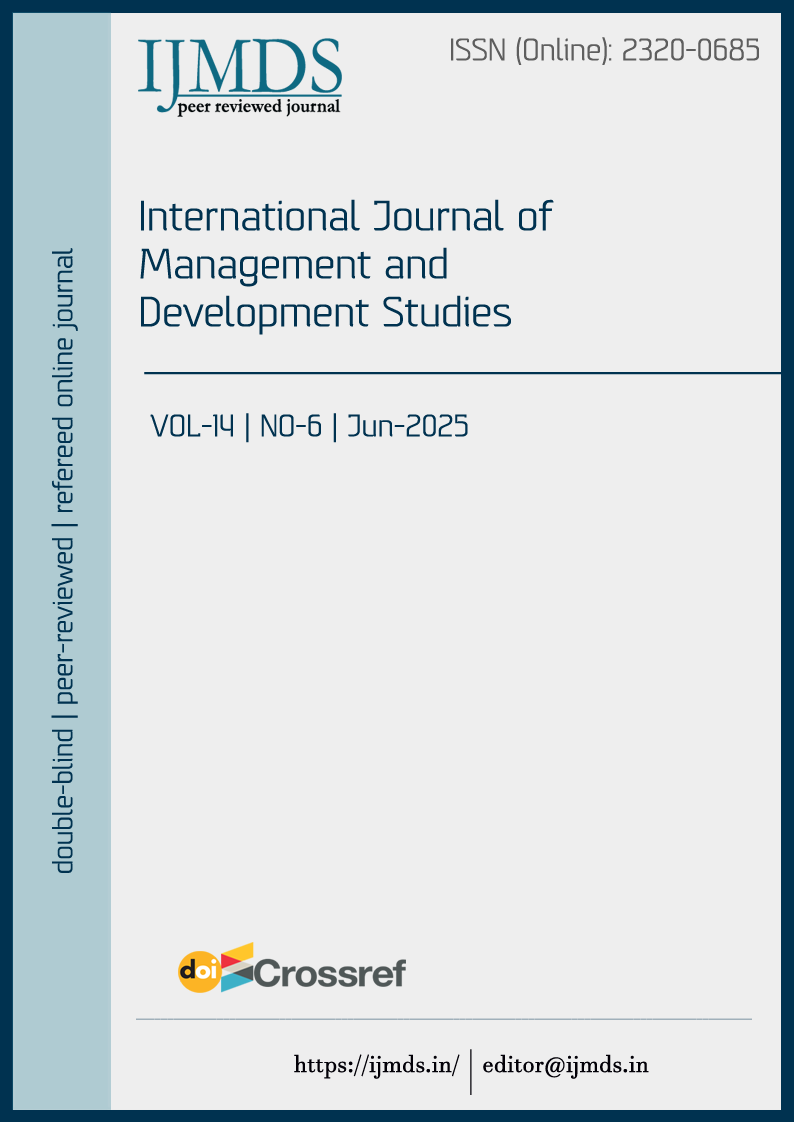Examining Differences in the Level of Financial Inclusion and Empowerment: A Study on BOP Consumers
DOI:
https://doi.org/10.53983/ijmds.v14n6.006Keywords:
Financial inclusion, economic empowerment, socio-cultural empowerment, political empowerment, psychological empowerment, BOPAbstract
This study explores gender-based differences in financial inclusion and empowerment among Bottom of the Pyramid (BOP) consumers in India. Despite efforts toward financial inclusion, BOP individuals—especially those in remote and underserved areas—continue to face challenges in accessing formal financial services. The research investigates not only the accessibility and usage of financial services but also four key dimensions of empowerment: economic, socio-cultural, political, and psychological. Using a structured questionnaire, primary data was collected from 500 BOP consumers across 10 districts. Responses were rated on a five-point Likert scale and analysed using mean score analysis. Findings indicate that both male and female BOP consumers experience a relatively high level of financial inclusion, with men slightly outperforming women in terms of accessibility and usage of financial services such as banks, ATMs, and post offices. However, when it comes to empowerment, female respondents reported slightly higher levels across all four dimensions, suggesting a positive trend toward gender parity. Although the differences are minor, they reveal meaningful insights into how gender influences financial behaviors and empowerment perceptions. The study concludes that gender-sensitive financial policies and targeted outreach efforts are essential to bridging the minor but notable gaps in financial inclusion and empowerment. By addressing these disparities, financial institutions and policymakers can play a crucial role in fostering inclusive growth and socio-economic development in BOP communities.
Downloads
References
Agarwal, A (2010), Financial Inclusion: Challenges & Opportunities, 23rd Skoch Summit 2010.
Al-Smadi, M. (2018). The role of financial inclusion in financial stability: lesson from Jordan. Banks and Bank Systems, 13(4), 31–39. https://doi.org/10.21511/bbs.13(4).2018.03
Chakrabarty, K.C. (2010), Financial Inclusion and Banks: Issues and Perspectives, Reserve Bank of India
Consultative Group to Assist the Poor (2007), Branchless Banking for Inclusive Finance, The World Bank, Washington, DC.
Grameen Foundation (2011), available at: www.grameen foundation.org/what-we-do/mobilemoney
GSM Association (2007), Regulatory Framework for Mobile Money Transfers, GSM Association, London, available at: www.mobilemoneylive.org/go/download/?file
Hannig, and S. Jansen. 2010. Financial Inclusion and Financial Stability: Current Policy Issues. ADBI Working Paper 259. Tokyo: Asian Development Bank Institute. http://www.adbi.org/workingpaper/2010/12/21/4272.financial.inclusion.stability.pol icy.issues/
Irman, M., Budiyanto, B., & Suwitho, S. (2021). Increasing Financial Inclusion Through Financial Literacy And Financial Technology On MSMEs. International Journal Of Economics Development Research (IJEDR), 2(2), 126-141. https://doi.org/10.37385/ijedr.v2i2.273
Kumar, S., & Dr.H.G., J. (2016). Financial Inclusion through Financial Literacy in India: Issues and Challenges. Bonfring International Journal Of Industrial Engineering And Management Science, 6(1), 200-203. https://doi.org/10.9756/bijiems.8341
Mader, P. (2017). Contesting Financial Inclusion. Development and Change, 49(2), 461–483. https://doi.org/10.1111/dech.12368
Mehak, M., & Dharni, K. (2022). A Study on Financial Inclusion in India and Its Relation with Financial Literacy. Journal Of Economics, Management And Trade, 49-66. https://doi.org/10.9734/jemt/2022/v28i130388
Vivek, B. R. (2016). Empowering Women: Uncovering Financial Inclusion Barriers. Advances in Social Sciences Research Journal, 3(3). https://doi.org/10.14738/assrj.33.1611

